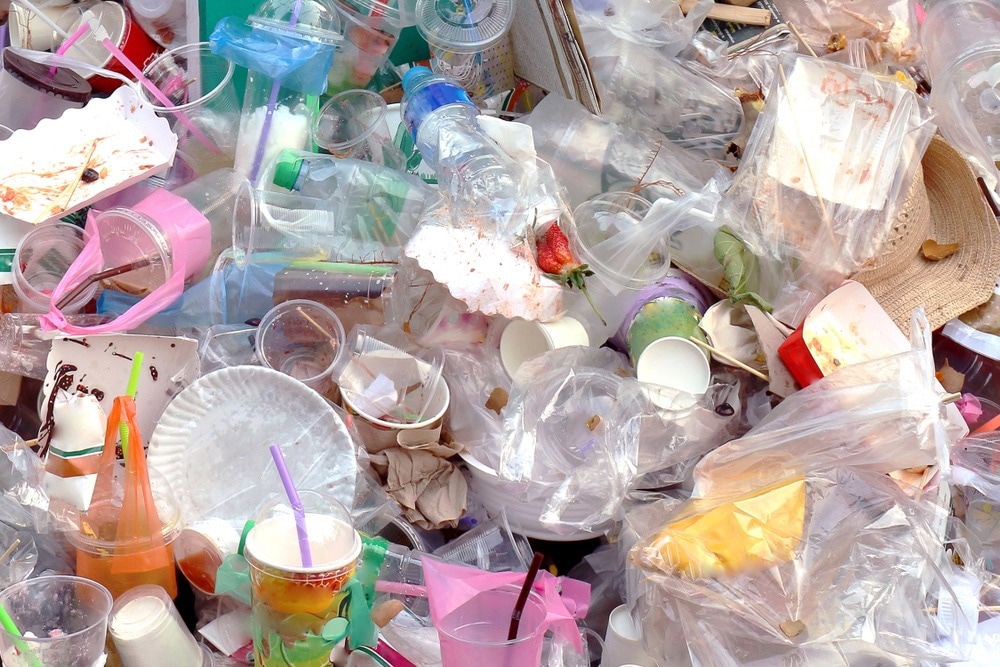 By Surbhi JainReviewed by Susha Cheriyedath, M.Sc.Aug 11 2022
By Surbhi JainReviewed by Susha Cheriyedath, M.Sc.Aug 11 2022In an article recently published in the journal iScience, researchers discussed the utility of nickel-iron nanoparticles encased in waste plastic-derived carbon nanotubes for low-temperature solid oxide fuel cells.

Study: Nickel-iron nanoparticles encapsulated in carbon nanotubes prepared from waste plastics for low-temperature solid oxide fuel cells. Image Credit: DeawSS/Shutterstock.com
Solid Oxide Fuel Cells (SOFCs)
As long as fuel inputs are available, solid oxide fuel cells, which are electrochemical energy conversion systems, can continually create electricity. They are one of the most promising technologies for addressing the world's growing energy needs as well as the issue of climate change.
The high operating temperatures that result in performance degradation, technical complexity, financial obstacles, and a limited range of applications are a major hurdle for the classical solid oxide fuel cells. Around the world, significant efforts have been made to address these issues.
Significance of Carbon Nanotubes in SOFCs
The enhanced thermal and electrical conductivity of carbon nanotubes (CNTs) speeds up the heat transfer and raises the rate of electrochemical processes. Compared to more conventional methods like landfilling or incineration, catalytic pyrolysis and gasification technologies have been shown to be a practical and cost-effective way to generate CNTs from waste polymers.
To create sophisticated functional carbon/metal composites, it is practical and cost-effective to intentionally utilize the remaining metallic phases in CNTs. To improve the charge transfer efficiency between the interfaces of these two components, it is crucial to build an intrinsic chemical interaction between CNTs and transition metal in addition to the physical mixing.
Due to their low cost and quick startup, low-temperature solid oxide fuel cells (LT-SOFCs) are potential new generation fuel cells. However, they present a considerable challenge to electrode materials with strong electrocatalytic activity.
Catalytic Pyrolysis of Waste Plastics for NiFe@CNTs-Blend SOFCs
In the present study, the authors discussed the carefully supervised catalytic pyrolysis of waste plastics to produce bimetallic nanoparticles enclosed in carbon nanotubes (NiFe@CNTs). The findings demonstrated that numerous multi-walled CNTs with outer diameters of (14.38±3.84 nanometer) were formed due to the Ni-Fe alloy nanoparticles' smallest crystalline size.
Such NiFe@CNTs-blend solid oxide fuel cells had an impressive performance, with a maximum power density of 885 milliWatt centimeter-2 at 500 °C. This could be related to the hierarchical architecture of evenly scattered alloy nanoparticles and the high degree of graphitization of NiFe@CNTs to enhance hydrogen oxidation reaction (HOR) activity.
Utility of Non-Precious Metal Nanoparticles on the Performance of LT-SOFCs
The team mentioned that the proposed approach could address the problems of sustainable waste management and ensure the security of the world's energy supply at the same time by upcycling waste plastics to create nanocomposites and exhibit a high-performance LT-SOFCs system. They described how adding evenly dispersed non-precious metal nanoparticles enclosed in CNTs (M@CNTs) to the anode, which was produced in line through a single step of directionally catalytic pyrolysis of waste PP, improved the LT-performance of SOFCs.
The researchers investigated the effects of the catalyst's active metal components (monometallic Fe, Ni, and bimetallic NiFe) on the M@CNT quality, operation, and SOFC performance.
This work provided a novel strategy for the management of waste plastics sustainably and accelerating the use of LT-SOFCs.
Performance Characteristics of NiFe@CNTs-Blend LT-SOFCs
For NiFe@CNTs, Fe@CNTs, and Ni@CNTs, respectively, the work function of graphene was improved from 5.05 electronVolt to 5.72 electronVolt and 6.60 electronVolt. Additionally, the synergistic effects of bimetallic Fe-Ni species during the catalytic synthesis of NiFe@CNTs demonstrated an ideal near zero value of hydrogen adsorption energy at the hollow site of 456 when NiFe alloy was formed in the NiFe@CNTs.
Compared to the 123 hollow sites or the 45 bridge site, the 234 hollow site was the preferred hydrogen adsorption site among all examined bonds for Ni@CNTs. One phase of pyrolysis and in-line catalytic degradation of polypropylene resulted in the successful synthesis of CNT materials having non-precious transition metal nanoparticles incorporated in them to improve the LT-SOFC performances.
In contrast to monometallic Ni and Fe, the bimetallic (NiFe@CNTs) CNTs produced longer, smoother, and narrower CNTs, as well as well-dispersed Fe-Ni alloy nanoparticles that could be seen inside. The near resemblance of the carbon peak to the theoretical value and the reduced ID/IG ratio demonstrated the high graphitization structure of the gathered CNTs.
With a maximum power density value of 885 milliWatt centimeter-2 at 500 °C, NiFe@CNTs as an electrode additive demonstrated impressive low-temperature solid oxide fuel cell performance. This was primarily because of their electrical conductivity and effective agglomeration prevention.
Additionally, DFT studies showed that when NiFe alloy developed in the NiFe@CNTs, an ideal near-zero adsorption energy of hydrogen was produced at the hollow site of 456.
In conclusion, this study demonstrated a novel method for the economical and environmentally friendly recycling of plastic waste. The authors mentioned that this work also sheds light on low-cost, high-performance catalysts for low temperature-solid oxide fuel cells using carbon-based materials loaded with tunable bimetallic species.
Reference
Liu, Q., Wang, F., Hu, E., et al. (2022). Nickel-iron nanoparticles encapsulated in carbon nanotubes prepared from waste plastics for low-temperature solid oxide fuel cells. iScience https://www.sciencedirect.com/science/article/pii/S2589004222011270
Disclaimer: The views expressed here are those of the author expressed in their private capacity and do not necessarily represent the views of AZoM.com Limited T/A AZoNetwork the owner and operator of this website. This disclaimer forms part of the Terms and conditions of use of this website.